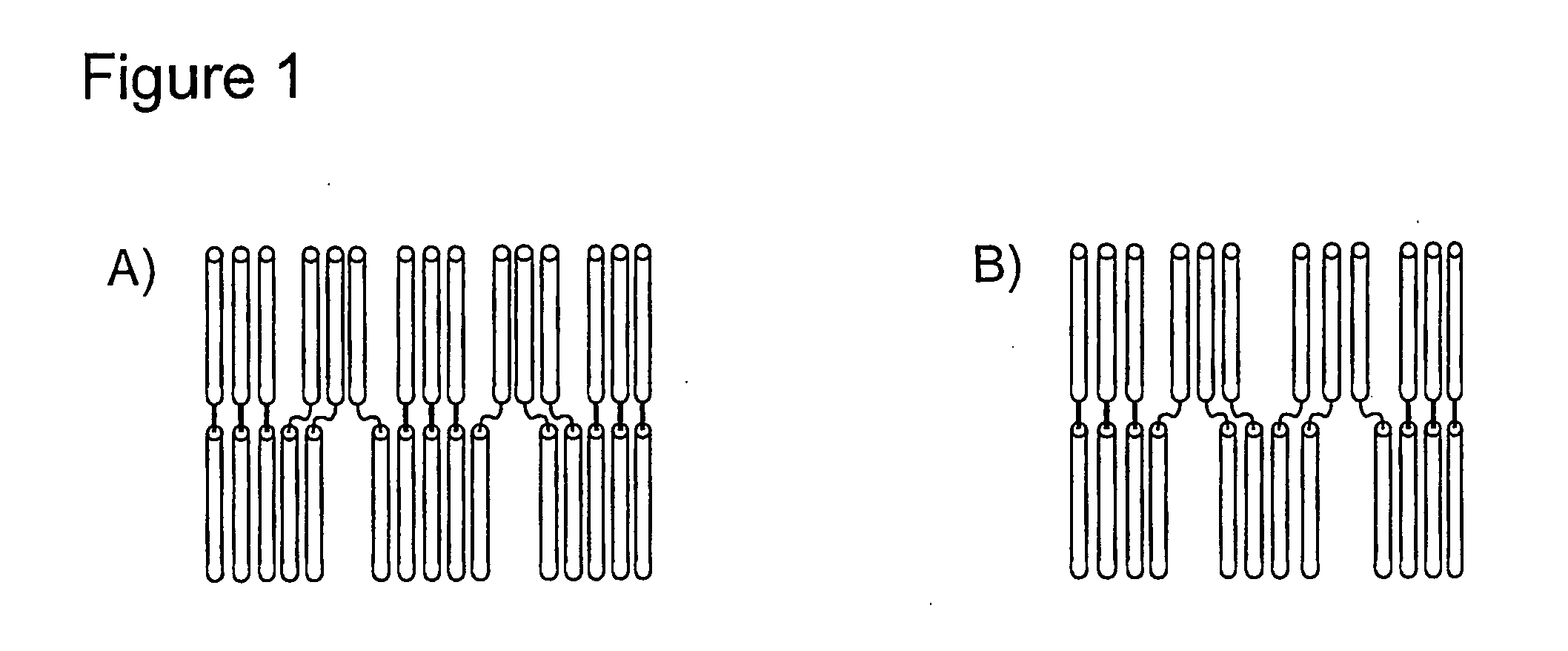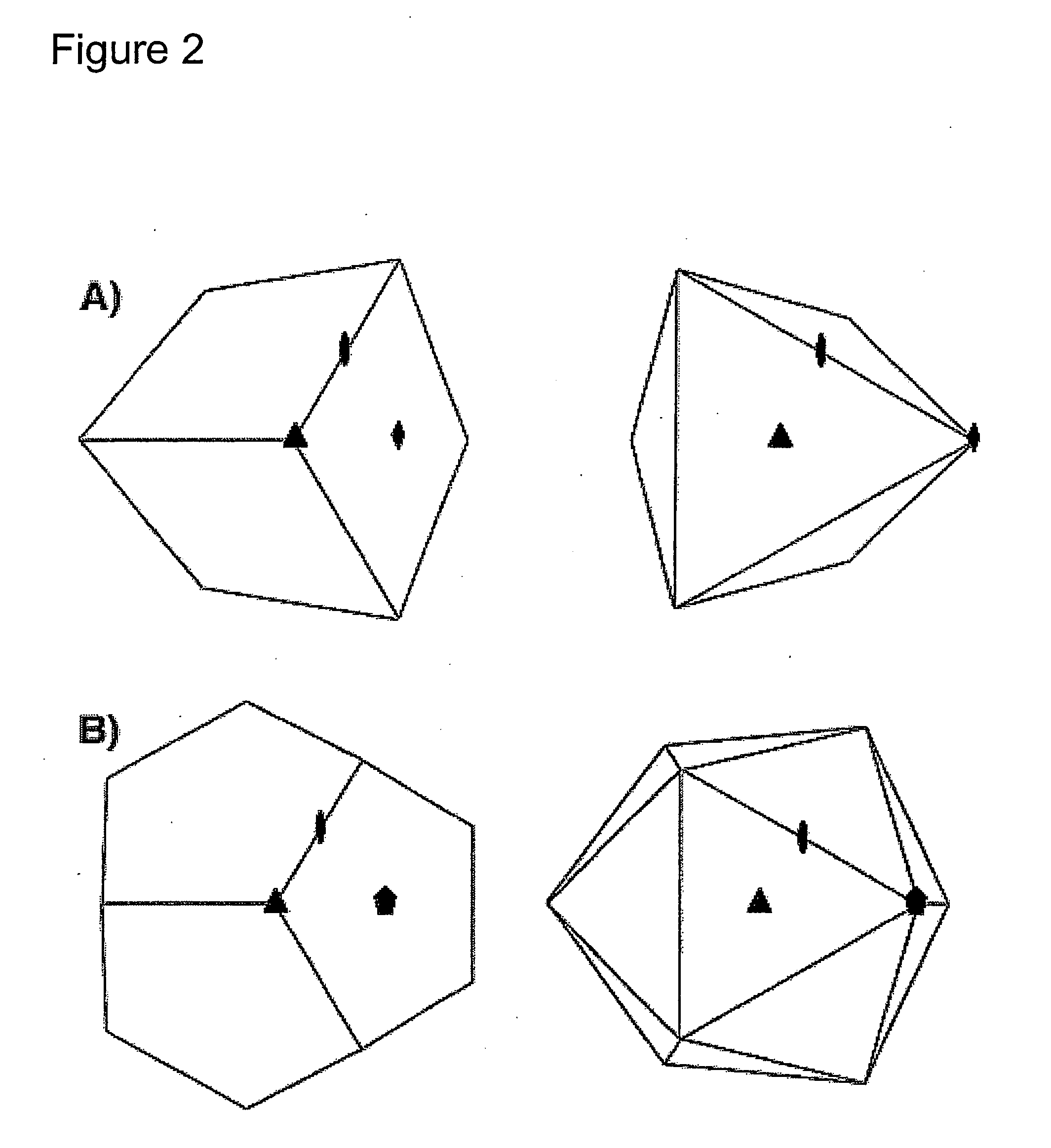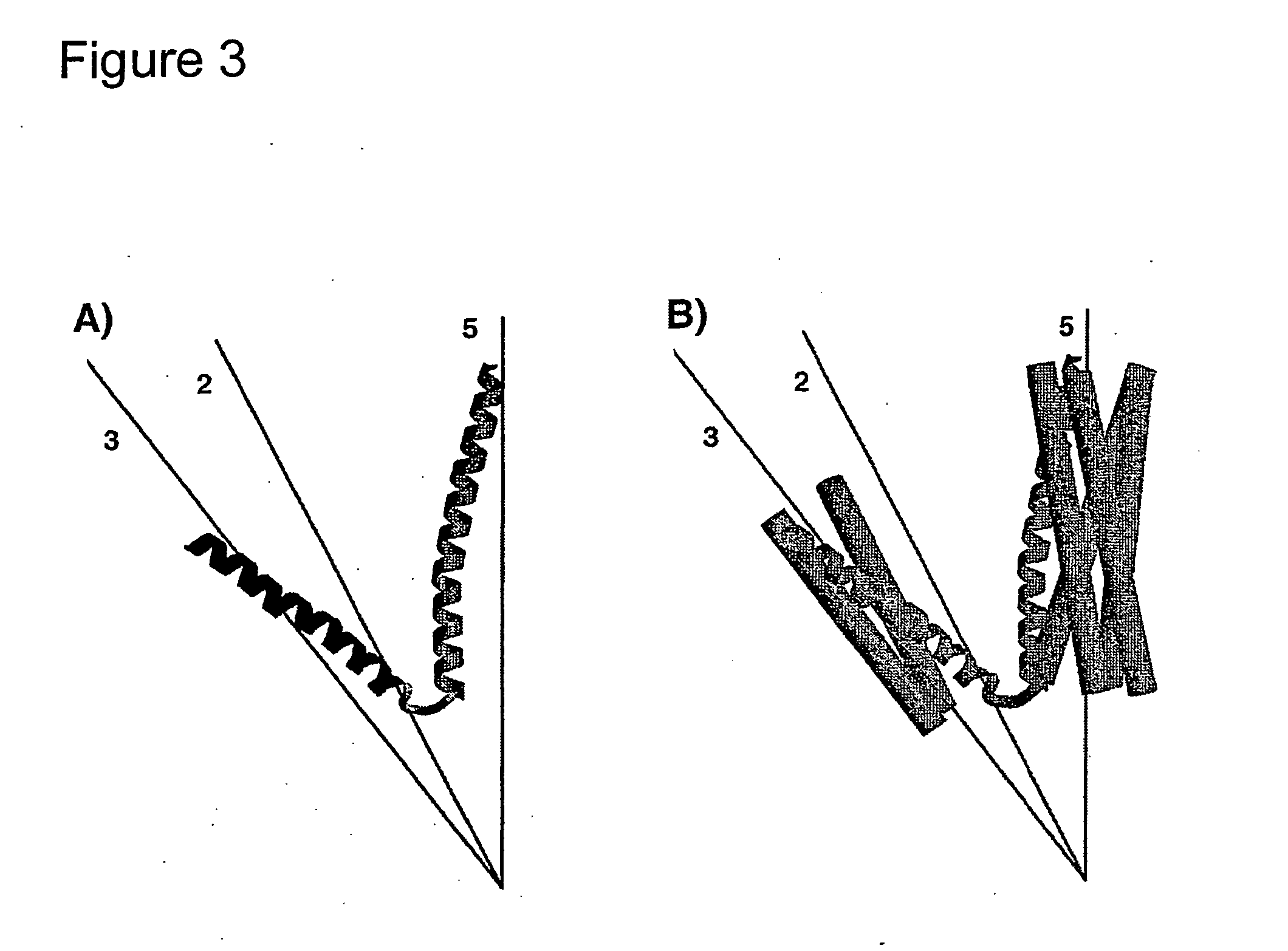Peptidic nanoparticles as drug delivery and antigen display systems
- Summary
- Abstract
- Description
- Claims
- Application Information
AI Technical Summary
Problems solved by technology
Method used
Image
Examples
example 1
Ac-COMP—Trimer(De Novo)-NH9
[0110] A peptide of the following sequence (SEQ ID NO:1) is prepared by standard solid phase peptide synthesis (Merrifield R. B., Adv Enzymol Relat Areas Mol Biol. 1969, 32:221-296) starting the synthesis from the C-terminus.
1 10 20 30 40Ac-DEMLRELQETNAALQDVRELLRQQVKQITFLKCLLMGGRLLCRLEEL 50 60ERRLEELERRLEELERR-NH2
[0111] This corresponds to 30 amino acids from the pentameric domain of COMP (Cartilage Oligomerization Matrix Protein) lacking the disulfide bridges at the C-terminal end and with improved N- and C-termini for stable intra- and interhelical interactions, two glycine residues as the linker segment; and 26 amino acids as a de novo designed trimeric coiled-coil domain. At the N-terminus the positively charged amino group is replaced by an acetylamino moiety, at the C-terminus the negatively charged carboxy group is replaced by a carboxamide. Residues 33 and 42 are cysteine residues; they are at aa(f) positio...
example 2
COMP—Trimer(De Novo) (No Cys)
[0128] A peptide of the following sequence (SEQ ID NO:2) is recombinantly expressed in a standard E. coli expression system using a His-tag affinity purification scheme in combination with a thrombin cleavage:
10 20 30 40GSDEMLRELQETNAALQDVRELLRQQVKQIRRLKRLLRGGRLLAELEEL50 60RERLEELERRLEELERR
[0129] This is related to the sequence from Example 1 (SEQ ID NO:1) but with improved intra-molecular ionic interactions between the two helices of the nanoparticle (residues 31, 32, 35, 38, 45, 50, 51), lacking the intra-molecular disulfide bridge between residues 33 and 42 of Example 1 (replacement of cysteine by arginine or alanine, respectively) and starting with two additional residues (glycine and serine) from the thrombin cleavage site of the expression system.
[0130] One condition was tested for assembling nanoparticles from the monomeric building block SEQ ID NO:2: 1 mg / ml peptide is dissolved in 150 mM NaCl, 20 mM Tris,...
example 3
Trimer(Foldon)—COMP
[0131] A peptide of the following sequence (SEQ ID NO:3) is recombinantly expressed in a standard E. coli expression system using a His-tag affinity purification scheme in combination with a thrombin cleavage:
10 20 30 40GSGYIPEAPRDGQAYVRKDGEWVLLSTFLGGLAPQMLRELQETNAALQD50 60 70VRELLRQQVKQITFLKNTVMECDACG
[0132] This corresponds to two additional residues (glycine and serine) from the thrombin cleavage site of the expression system, 27 amino acids of the trimeric foldon domain of fibritin; two glycine residues as the linker segment; and 44 amino acids from the pentameric domain of COMP including the disulfide bridges at the C-terminal end. Residues 71 and 74 may form interhelical disulfide bridges.
[0133] Two different conditions are tested for assembling nanoparticles from the monomeric building block SEQ ID NO:3.
[0134] Preparation 1: 1 mg / ml peptide is dissolved in 150 mM NaCl, 20 mM Tris, pH 7.0.
[0135] Preparation 2:...
PUM
| Property | Measurement | Unit |
|---|---|---|
| Hydrophobicity | aaaaa | aaaaa |
| Covalent bond | aaaaa | aaaaa |
Abstract
Description
Claims
Application Information
 Login to View More
Login to View More - R&D
- Intellectual Property
- Life Sciences
- Materials
- Tech Scout
- Unparalleled Data Quality
- Higher Quality Content
- 60% Fewer Hallucinations
Browse by: Latest US Patents, China's latest patents, Technical Efficacy Thesaurus, Application Domain, Technology Topic, Popular Technical Reports.
© 2025 PatSnap. All rights reserved.Legal|Privacy policy|Modern Slavery Act Transparency Statement|Sitemap|About US| Contact US: help@patsnap.com



